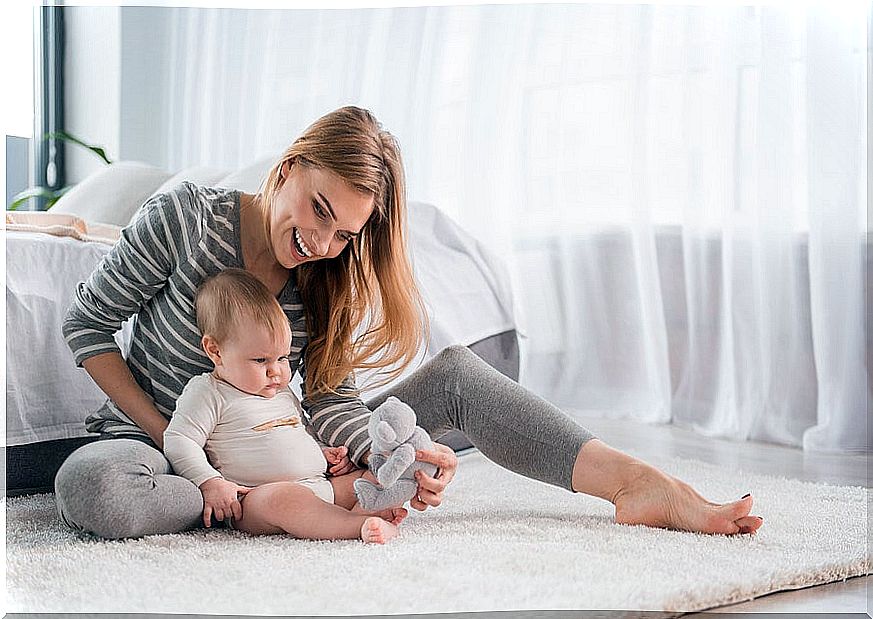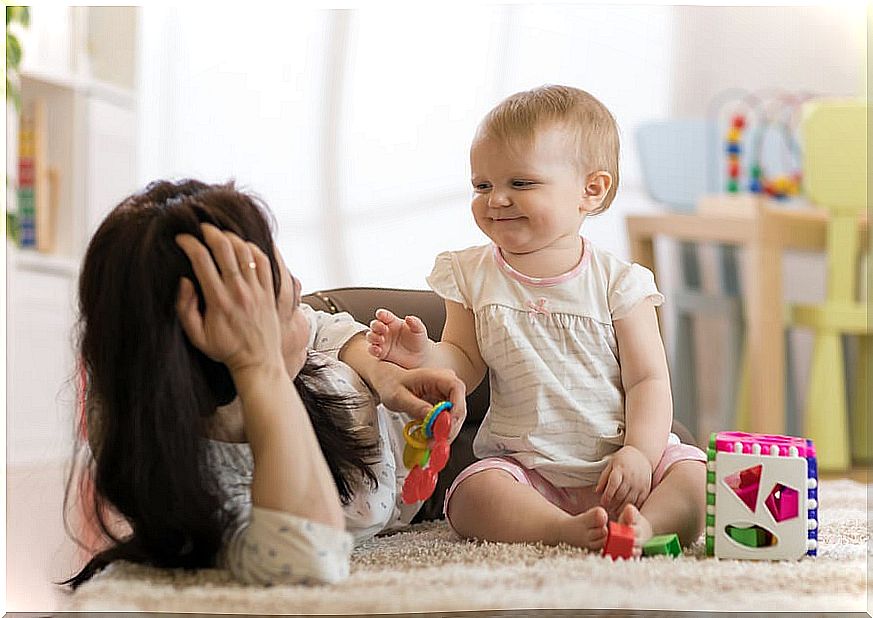How To Teach Your Baby To Sit Up
As parents, we wait impatiently for our baby to perform his first feats, his first smiles, his first crawls, his first steps… Although everything must happen gradually, we are anxious. We want to see him sit alone and soon. It has happened to all of us and you probably want to teach your baby to sit up.
Is it time for you to start sitting alone? By observing your baby, he will give you the signals to know if he is ready, without representing a risk to his back. The most appropriate thing is that you do not advance the posture; the baby will come to it on its own.
You have to give him the possibility to spend as much time as possible at home with comfortable clothes and in a space that allows him to explore and exercise his body. When you reach certain developmental milestones, you can teach your baby to sit up.
How do you know if your baby is ready to sit up?

It is a mistake to force the baby’s pace in any learning and development. Each child is unique and there should be no timetable that requires them to do certain things at specific times. Some will take longer while others will achieve it more quickly.
In the same way that some children get their first teeth at 3 months and others at 8 months, for the baby to sit there is no pre-established time. We must wait for it to reach the necessary maturity. Some babies will start sitting at 6 months while others will do so at one year.
However, you can watch out for the following signs. If, when lying on his stomach, the baby can roll over onto his back and onto his stomach again, he is doing a movement that tones, among other muscles, the obliques.
Another sign is that the baby is able to sit up a bit on his own when he goes for a stroll in his chair. It is common for this to begin to occur around 6 months, but it is not decisive. It can occur between 8 and 9 months as well.
Sit down: a great moment
Learning to sit is a great advance in the baby’s psychomotor development. This pose allows you to strengthen your back muscles, thus avoiding discomfort and potential problems when you begin to walk. As soon as he is able to sit up, his body will prepare to crawl and walk.
That is why the baby should not be seated before he is ready for it, that is, before his own muscles allow him to do so. When your little one is able to sit up, this gives him greater autonomy to manipulate toys and objects that catch his attention.
Sitting offers you a different perspective of the environment in which you operate. In this position he is exposed to new stimuli, which fosters his intelligence and his curiosity to know everything. Your senses are awakened for sensory exploration.
Exercises to teach your baby to sit
Do you wonder if it is possible to teach your baby to sit? For your little one to sit you can help him strengthen his muscles with some exercises. You are not going to speed up the process, only that this way it will be easier for you to achieve it.
Doing these exercises is one more activity to share and enjoy time with your little one. It gives you the possibility to participate and contribute, little by little, in the wonderful growth of the child.
Before starting these exercises to teach your baby to sit, your child must have passed other milestones in his psychomotor development, such as keeping his head raised when lying down and pretending to want to sit up every time you take him by his hands.
Gymnastics with the baby

To do these exercises to stimulate your baby, throw a blanket on the floor and get to work. Your abs, your spine and the muscles of your back, neck and arms will be strengthened! It is important that you have some of his favorite toys close by.
- Place your baby on his back. Sit in front of him and take him by his hands. Slowly lift him up little by little until he sits down and then put him back down. Repeat the movement three or four times.
- While you are on the floor, sit your baby and hold him by the hips. Leave him for a few seconds and then put him down so he can rest. Repeat the exercise three or four times so he does not tire.
- Sit your baby on your lap, lying on you. Play clapping or some other traditional game like “sawdust, sawdust.” For a moment, lift his back away from you so that he remains seated on his own. You can help him by holding his arms while he’s not attached to you.
- Lay your child on his back. Put a flashy toy on top of him to tempt him to pick it up. Your baby will try to reach out little by little to grab it.
- Lay him on his back and play to tilt him slowly, from right to left, and vice versa.
Never burden your baby
If you notice that your baby loses interest in what you are doing, stop the exercise sessions. As in any advance, the secret to learning to sit is to stimulate him, never force him. Avoid getting tired. Enjoy the moments together and keep trying. You will soon be ready for your first sitting photo!









